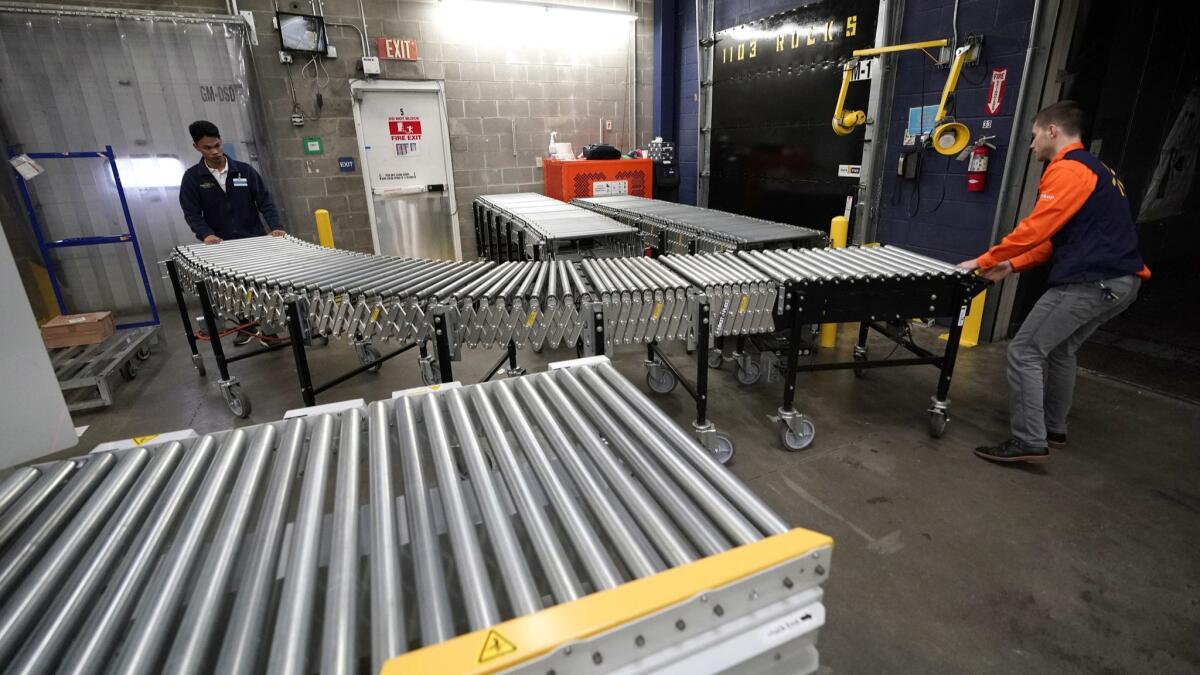A hot labor market brings full-time perks to some part-time employees

- Share via
When one of the 900 hourly workers at Rent the Runway died, the dead man’s co-workers, a close group that included some of his family members, couldn’t take time off to mourn his death or attend the funeral.
If they’d been among the company’s 300 salaried employees, it wouldn’t have been an issue. Their benefits included bereavement leave, paid parental leave and time off to care for sick family members, as well as invites to occasional company-wide beach or ski days.
It didn’t seem fair, and soon after the CEO of Rent the Runway, Jennifer Hyman, decided to equalize benefits across her workforce. That made Rent the Runway one of a growing number of companies that are extending benefits to hourly and part-time workers. Almost half of the 391 companies surveyed by the International Foundation of Employee Benefit Plans now offer the same health insurance coverage for all employees. About a third offer paid maternity or parental leave to their part-time workers, too, the survey found.
Earlier this month, Best Buy announced a subsidized childcare benefit for all of its employees, capping a year that began with Starbucks and Walmart extending their parental leave policies to hourly and part-time workers. General Mills improved leave for new moms and dads and added paid time off for bereavement and caring for sick loved ones. Over the summer, the Wing, a New York-based co-working space with locations across the country, expanded health insurance and retirement benefits to all of its 300 employees, with a goal to do the same for parental leave.
Over the last year, 18 other large employers updated their paid leave policies, with many of them, like H&M and Dollar General, closing the gaps between hourly and salaried workers, according to Annie Sartor, an advocacy director at PL+US, an advocacy organization that worked on the Starbucks and Walmart campaigns.
The spoils of the slowly improving U.S. economy have gone mostly to the highest earners, and a competitive labor market at the highest end of the earnings spectrum has led to a benefits boom. In the last few years, in-demand workers have seen longer paid leave times, coverage for fertility treatments and egg freezing, and employer-sponsored student debt repayment plans.
Meanwhile, full benefits still elude many of those on the lower rungs of the employment ladder. Less than 10% of those companies cited in the International Foundation of Employee Benefit Plans survey extend full benefits to all of their workers. Contract workers, who make up 10% of the workforce, are left out of the statistics altogether and often get no benefits, though some are seeing gains. Survey Monkey, under pressure from employees, now offers full benefits to its contractors; Microsoft requires subcontractors with more than 50 employees to provide paid family leave.
Companies have historically suggested part-time or hourly workers don’t need full benefits: They’re students, teenagers, or stay-at-home parents working to make extra cash on the side. That premise no longer holds. “A lot of people who work at H&M are parents, and need time to take care of their kids,” said Artavia Milliam, an employee at H&M, who helped negotiate more benefits for her part-time colleagues.
People who work more than one job make up 5.1% of the workforce, a figure that has held steady even as the economy has recovered from the recession. The trend suggests that in parts of the economy, full-time positions have been permanently replaced with part-time workers, who generally earn less and have less stability.
Extending benefits to all workers can get expensive. “There are upfront costs in doing this,” said Rent the Runway’s Hyman. Employers spend almost $30,000 per employee with a family of four per year of employer-sponsored health insurance.
Hyman believes the added costs will pay off. For one, better benefits will increase retention and lead to savings on training and hiring, she says. Because hourly workers didn’t have as much flexibility or paid time off, some have had to quit to take care of sick family members.
“Can you imagine a senior executive at a Fortune 100 company having to choose between grieving for a loved one in their family and keeping their job?” Hyman said.
She also plans on using her own company as a case study to track the potential cost savings. She says loyalty rates and productivity are already up.
“We can debunk those myths that this is just a sunk cost,” Hyman said. “It’s not. This is an investment in your people, your talent, your culture.”
More to Read
Inside the business of entertainment
The Wide Shot brings you news, analysis and insights on everything from streaming wars to production — and what it all means for the future.
You may occasionally receive promotional content from the Los Angeles Times.










